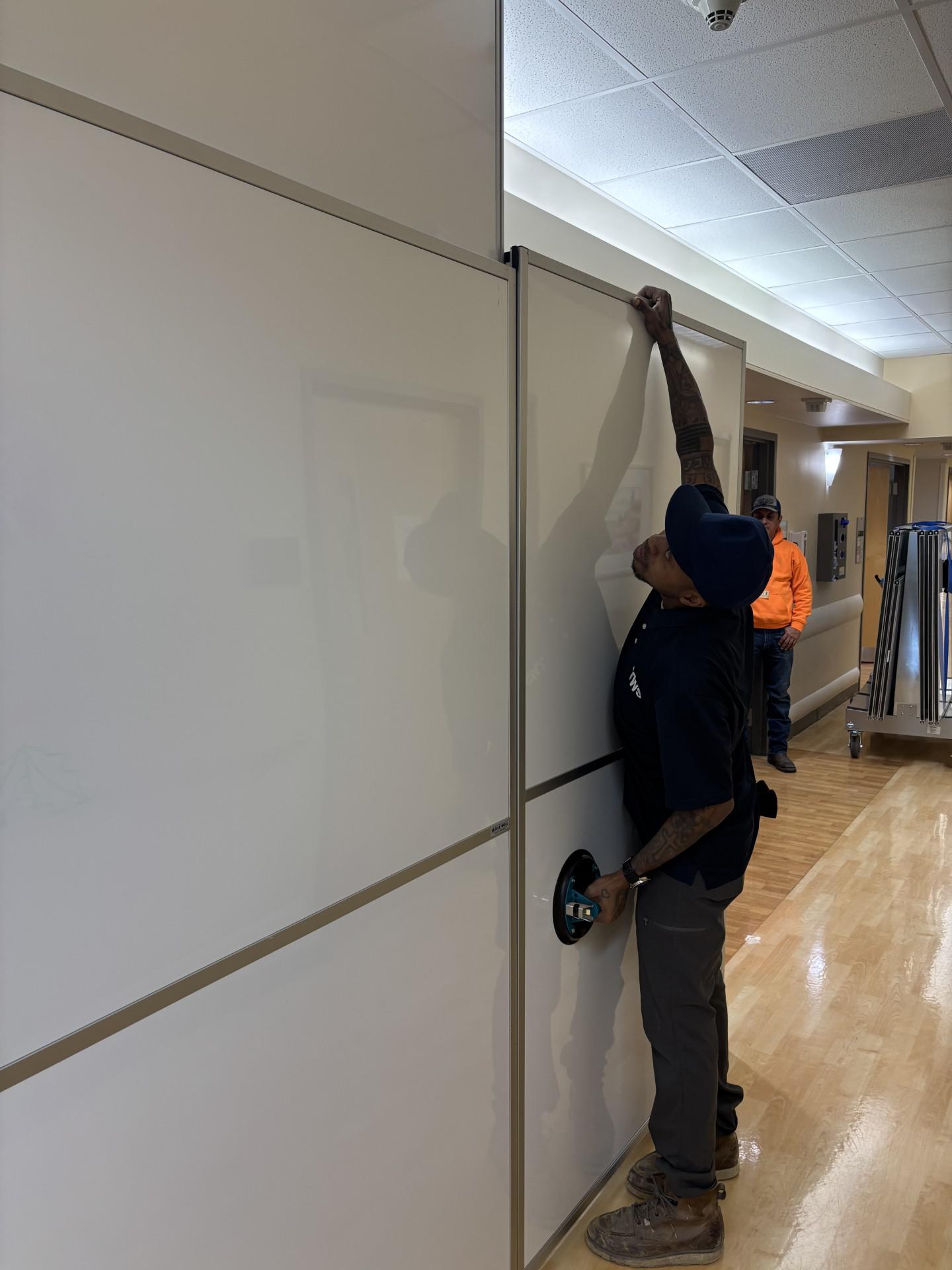How Negative Air Pressure and Containment Walls Reduce Infection Risks
Modern healthcare settings grapple with a persistent challenge—the control and prevention of airborne infections. Whether it’s during a renovation, an infectious disease outbreak, or in high-risk units like isolation rooms, maintaining a safe environment for patients, staff, and visitors is crucial. This is where negative air pressure and temporary containment walls play an invaluable role.
Together, these two systems create controlled environments that mitigate the spread of harmful airborne particles, safeguarding everyone in healthcare facilities. But how exactly do they achieve this, and what makes them indispensable? This article will explain the mechanics behind negative air pressure and temporary containment walls and explore their effectiveness in reducing infection risks.
What is Negative Air Pressure?
Negative air pressure is a carefully controlled environment in which the air pressure inside a room is lower than the air pressure outside. This difference in pressure is achieved using specialized ventilation systems that consistently remove more air from the room than is allowed to enter. The result? Airborne contaminants, such as viruses, bacteria, and harmful particles, are safely contained within the space because air naturally flows into the lower-pressure environment and cannot escape.
How it Works:
- Air Circulation and Extraction: Negative air pressure systems pull contaminated air out of the space, filtering or disposing of it safely. High-Efficiency Particulate Air (HEPA) filters are often used to capture even the smallest infectious particles.
- Prevention of Airborne Spread: Since the contaminated air cannot flow outward into adjacent areas, this significantly reduces the risk of cross-contamination.
- Applications in Healthcare: This approach is essential for hospital infection control in settings like isolation rooms for tuberculosis or COVID-19 patients and during procedures involving aerosol-generating equipment.
Negative pressure serves as an aggressive yet elegant method of combatting infection at its source, especially in scenarios involving highly transmissible diseases.
How Temporary Containment Walls Work
Temporary containment walls are modular, reusable barriers designed to create sealed environments within existing spaces. These barriers are particularly useful in healthcare facilities where specific areas must be isolated for safety, renovation, or infection control.
Here’s what makes these walls uniquely effective for infection prevention:
- Barrier Creation:
Temporary containment walls physically block contaminants, dust, and pathogens from moving between spaces. By partnering with a negative air pressure system, they keep harmful particles confined to specific zones.
- Customizable and Sealed:
Advanced containment walls are equipped with airtight seals, HEPA filtration systems, and flexible layouts that adapt to different healthcare spaces. These features ensure containment is maintained, even in dynamic environments.
- Ease and Convenience:
A key advantage for healthcare facilities is that companies offering temporary wall solutions, like Temporary Wall Systems, handle delivery, installation, and removal. The service minimizes disruption, ensuring patient care can continue uninterrupted.
Temporary containment walls are the foundation on which controlled environments, like negative pressure rooms, are built. Their adaptability and reliability make them a go-to solution for healthcare professionals.
Benefits in Healthcare Settings
Negative air pressure and temporary containment walls have revolutionized how hospitals and clinics protect patients and staff against airborne threats. Here are some key benefits they offer:
1. Reduction of Airborne Contaminants
Negative air pressure rooms actively trap and filter harmful particles, limiting their spread. Whether it’s protecting patients with weakened immune systems or controlling infectious outbreaks, this setup creates a safer environment.
2. Prevention of Cross-Contamination
Temporary containment walls complement negative air pressure systems by isolating construction zones, contaminated spaces, or quarantine areas. This prevents harmful dust and pathogens from infiltrating other parts of the facility.
3. Flexibility for Facility Management
Healthcare facilities frequently face diverse challenges, from emergency renovations to infection surges. Temporary containment walls provide a customizable solution that can adapt to nearly any healthcare setting, ensuring infection control efforts remain agile.
4. Compliance and Best Practices
The combination of containment walls and negative air pressure aligns with industry standards, such as those outlined by the CDC and WHO, for controlling airborne diseases in healthcare environments.
5. Improved Patient and Staff Safety
The ultimate goal of these systems is to create an environment where patients and healthcare workers feel secure. Reducing exposure to contaminants fosters trust and promotes better health outcomes.
Pioneering the Future of Infection Control
The effective combination of negative air pressure and temporary containment walls represents a significant leap forward in infection control strategies. By creating secure, adaptable environments, these solutions are ideal for a range of healthcare applications, from isolation rooms to large-scale renovations.
What’s truly remarkable is the ease and convenience with which these systems can be implemented. Companies like Temporary Wall Systems not only deliver high-performance, customizable containment walls but also provide a turn-key service that includes delivery, installation, and removal. This seamless approach allows healthcare facilities to focus on their primary mission—providing exceptional patient care.
Managing infection risks in dynamic healthcare settings requires innovative, well-executed solutions. Negative air pressure paired with temporary containment walls provides just that, marking an essential advancement in creating safer spaces for all.



